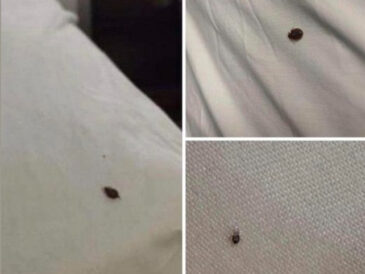Introduction
South Africa, renowned worldwide for its majestic landscapes and spectacular wildlife, faces a growing challenge threatening the balance of its natural reserves: rhino poaching. These iconic animals, victims of human greed, are targeted by well-organized groups of poachers motivated by a multi-million dollar illegal trade.
Recently, the Sibuya Nature Reserve was the scene of a dramatic event: three poachers who illegally entered the reserve to hunt rhinos were attacked and eaten alive by a pride of hungry lions. This tragic incident highlights not only the dangers inherent in poaching but also the complexity of wildlife protection efforts in South Africa.
1. The Sibuya Nature Reserve: A Biodiversity Sanctuary
Located along South Africa’s southern coast, the Sibuya Nature Reserve is an ecological jewel. It covers thousands of hectares, providing habitat for a wide range of animal species, including the famous “Big Five” (lion, leopard, elephant, rhino, buffalo).
The reserve is particularly renowned for its commitment to conserving both white and black rhinos, two species vital to the local ecosystem’s survival. The wild beauty of Sibuya attracts thousands of tourists each year, who indirectly fund conservation programs through ecotourism.
However, this richness also attracts greed. For several years, the reserve has faced a surge in poaching attempts, severely threatening animal populations.
2. Rhino Poaching in South Africa: Figures and Stakes
2.1 Global Rhino Population
South Africa is home to about 80% of the world’s rhino population. There are nearly 29,000 rhinos in the country, mainly white rhinos (more numerous) and black rhinos (more endangered). These animals play a crucial role in their ecosystems, particularly influencing vegetation and maintaining the food chain.
2.2 The Scale of Poaching
Despite conservation efforts, poaching has reached alarming levels. In 2017 alone, over 1,028 rhinos were illegally killed in South Africa. Although yearly numbers vary, this figure highlights the intense pressure on the species.
Poachers exploit global demand for rhino horns, a black market worth hundreds of millions of dollars annually. This illegal hunting severely harms biodiversity and jeopardizes conservation efforts.
3. The Inestimable Value of Rhino Horns
3.1 International Demand
The illegal rhino horn trade is driven mainly by demand in Southeast Asia, particularly Vietnam and China. Rhino horns are prized for their supposed medicinal properties, although science has clearly disproven any therapeutic effects. They are also used for carving art objects, especially in China.
3.2 Astronomical Prices
A single rhino horn weighs between 1 and 3 kilograms. On the Asian black market, a kilogram can fetch up to $100,000, meaning a single horn can be worth as much as $300,000. In South Africa, the local black market price is about $1,500 per kilogram before export.
This financial windfall motivates highly organized criminal groups to take enormous risks by infiltrating reserves to steal these precious horns.
4. The Tragic Attack in the Sibuya Reserve
4.1 Context of the Intrusion
On the night of July 1st to July 2nd, three poachers broke into the Sibuya Nature Reserve intending to hunt rhinos. Equipped with gear to quickly kill and cut the animals, they were unaware of a pride of hungry lions in the area.
4.2 The Lion Attack
According to Nick Fox, the reserve owner, the lion pride attacked the intruders quickly and violently. When surveillance teams arrived, only a skull and a fragment of a pelvis remained. No other body parts could be found.
Investigation suggested three individuals based on the discovery of three pairs of gloves and shoes, matching the typical size of poaching groups in the region.
4.3 Reactions and Implications
This tragic incident illustrates the mortal risks poachers face but also highlights the limitations of human efforts to secure reserves. While nature defended itself this time, this cannot be a viable long-term solution.
Click page 2 for more




